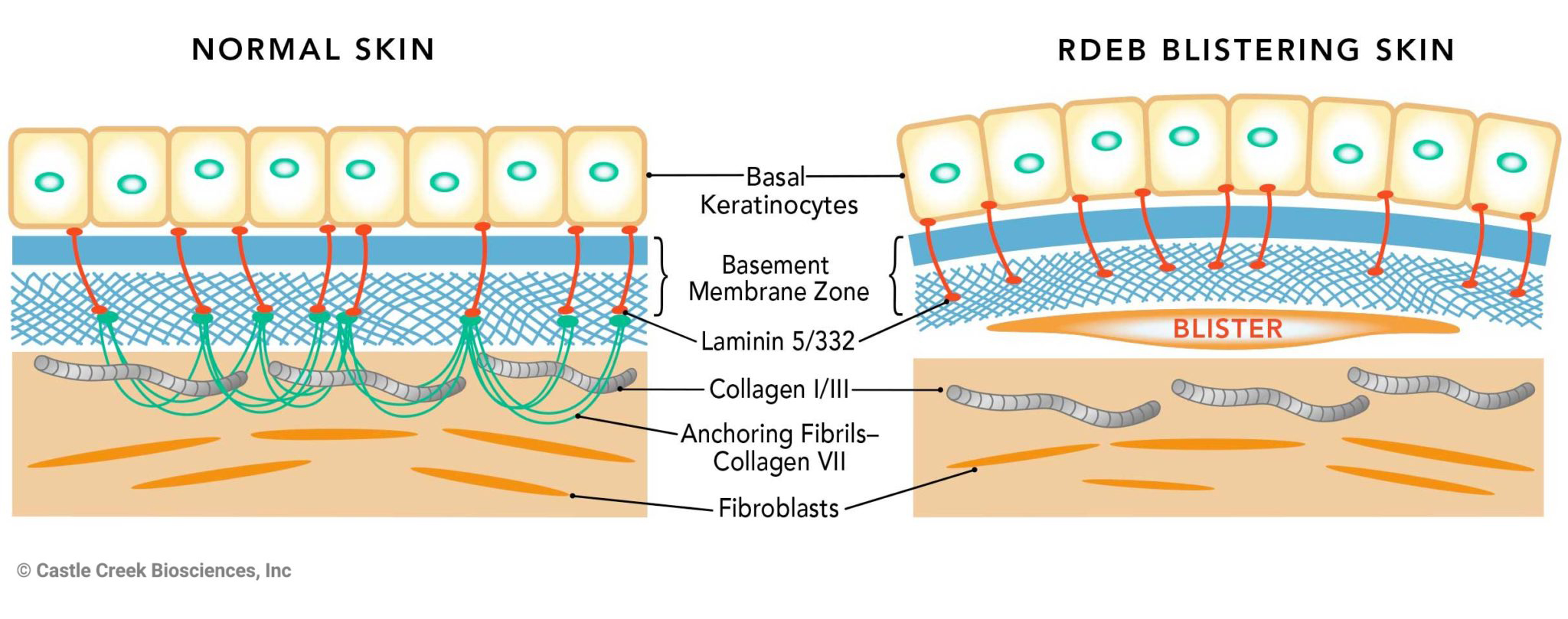About RDEB
Recessive dystrophic epidermolysis bullosa (RDEB) is considered one of the most severe forms of epidermolysis bullosa (EB), a family of conditions caused by different genetic mutations passed by parents to their children by way of chromosomes. RDEB is an autosomal recessive disorder, meaning that a child has inherited copies of the defective gene from both parents.1
RDEB patients do not produce functional Type VII collagen (COL7) due to a mutation in the COL7A1 gene. COL7—a protein—is the main component of anchoring fibrils that hold together the layers of skin. Without these fibrils, skin layers separate causing severe blistering, open wounds and scarring in response to any kind of friction or trauma.

Though estimates vary, prevalence of RDEB in the U.S. is approximately 3,850 patients2. These patients have a very high rate of significant and sometimes life-threatening health complications, including skin and internal disorders.
RDEB affects all genders and every racial and ethnic background equally.
1 Stanford Medicine, Epidermolysis Bullosa Clinic Frequently Asked Questions
2 Based on genetic modeling & simulation methods
Signs and symptoms of RDEB
RDEB causes severe blistering and areas of missing skin in response to any kind of friction, including normal daily occurrences like rubbing or scratching. The skin lesions of RDEB are typically painful and itchy.
Blistering begins at birth or shortly thereafter. Blisters cover much of the skin and there can be extensive internal blistering. Children can develop deformities caused by the chronic scarring of the fingers and toes and the hands and arms can become fixed in stiff positions. It is painful and difficult for a child with RDEB to ingest food due to the internal blistering that occurs in the mouth, esophagus, and gastrointestinal tract.3
Young adults with RDEB have a very high risk of developing a form of skin cancer called squamous cell carcinoma, which tends to be unusually aggressive and is often life-threatening.
3 Stanford Children's Health, FAQ About Epidermolysis Bullosa
Treatment options
People living with RDEB do not have U. S. Food and Drug Administration (FDA) approved treatment options for blister prevention or wound closure, so caregivers utilize standard wound care including constant bandaging and debridement processes, which may be painful. But research into the possible correction of underlying genetic mutations that cause RDEB has advanced in recent years, providing new opportunities to create personalized biologics with disease-modifying potential.
